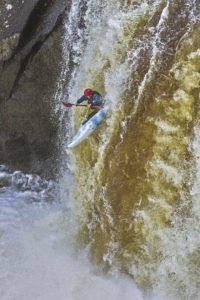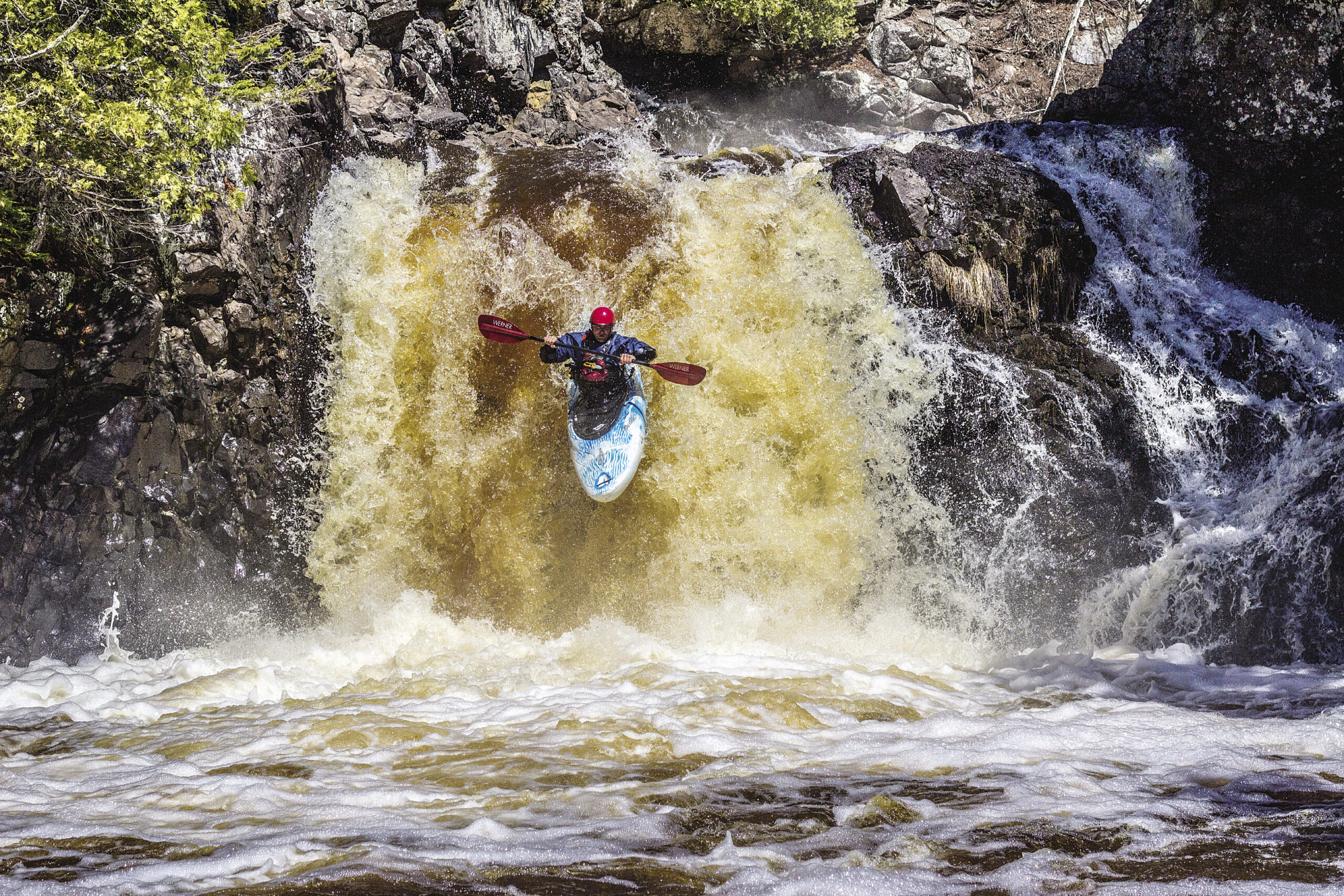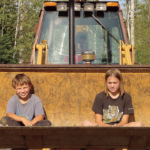Right now there’s a group of Minnesota paddlers salivating. Some of them might be watching river gauges or checking a handful of websites, but most are driving up and down the North Shore looking at the rivers for physical signs. They likely haven’t been on a river in months but are poised to start the year off with some world-class whitewater in their own backyard.
Creek boating is a season like no other on the rocky shoreline overlooking Lake Superior. “Spring on the shore is the only time that consistently gives us runnable flows on most of the creeks,” says kayaker Ryan Zimny of Thomson. “It’s fairly rare to get enough rain for them to be runnable, so it comes down to the snowmelt.”
As the winter’s snowpack begins to thaw, all that frozen water funnels into every river, creek, and drainage, saturating the ground to flood-like levels as it cuts down the ridgeline towards the Big Lake. For these whitewater kayakers, the result is a dream come true.
When the North Shore rivers are ready, word travels fast among the group and then beyond. According to Joel Decker of Carlton, for most kayakers in the area, there is a sense of urgency. “Some seasons are over by April 1st and some don’t even start until May. I think most treat each day as if the season can end at any time.” Rivers with a larger watershed might last a little longer, but there are no guarantees.
Many of the rivers offer runs between two to six miles long, on average dropping about 100 feet per mile until they empty into the Big Lake. The high volume of water creates extremely tight and fast-paced runs.
Two aspects make this area unique in the realm of whitewater kayaking. One is accessibility. With so many rivers concentrated along Hwy. 61, it’s not hard to pick and choose. The second is being able to finish a run by emptying out into the largest freshwater lake in the world.

There are some classic rivers like the Cascade, Split Rock, Baptism and Devil Track that skilled kayakers love for the slides, drops and scenery. Some, running through steep canyons, require a commitment where once you’re in, you’re in. Most, however, allow for a paddler to portage if the upcoming rapid or hole appears more hazardous than the rest (a portage on the Devil Track, for example, involves a 40-foot rappel).
And don’t forget the waterfalls, which for some are considered the spice of north shore runs. “From Duluth to Canada there are at least 20 runnable vertical drops of 10 feet or more. Some have technical [approaches] and some are just straight-forward and big,” says Cliff Langley of Duluth. “And then there are the scary ones.”
Like the water, the risks also run high.
“Hypothermia, falls from portaging, strainers [trees across the river], and ice shelves; all are real possibilities on many of the runs,” says Decker. A big consideration is the cold impact, one that kayakers address by wearing many warm layers underneath a dry suit and extra-thick neoprene.
Langley suggests North Shore creek boating isn’t for the fair-weather paddler. “It’s cold, steep, and fast. Some days the temps are barely in the 40’s, the water is just above freezing and there is still snow in the woods.”
Water levels change daily, so a section that ran one way the day before might look and feel totally different the next. It’s never the same year to year, making for “new” attempts each season.
What draws these paddlers to some of the most difficult rated rivers is the challenge, beauty and a chance to be in the moment. “Paddling whitewater is almost Zen because you have to be doing what you are doing, you aren’t talking, texting while driving, or other multitasking, you are paddling and that’s it,” says Langley.
It’s a sentiment shared by most North Shore kayakers, where egos get checked at the parking lot. “It’s not about trying to beat the river, it’s about harmonizing with it. Sort of like a forced meditation where you have to focus, you have to be in the moment,” adds Scott Ewan, also of Duluth.
For many, it’s an annual get-together centered on kayaking. “Some people might only come to the shore for a month in the spring and then move on to other parts of the country for the rest of the year,” says Zimny, who’s been paddling on the shore for 15 years. “I’ve met a lot of amazing friends, and creek season is a reunion.”
I remember driving by a Hwy. 61 pullout on a spring day last year and spotting a group of heavily geared characters. To most of us, on a fast glance, they might resemble the American Gladiators. Donning headgear, face shields and shoulder pads they had just finished a run down the Cascade River.
That circle of paddlers resonated with enthusiasm, camaraderie and respect. In Decker’s experience, “Everyone watches out for each other, and the bonds that form are pretty impressive.”
This spring, keep your eye out for these focused kayakers all along the scenic North Shore. With access from the Superior Hiking Trail, state park trails, and even the highway, you might catch a brightly colored boater awash in a swelling, whiskey-colored creek.
If the deep snow keeps you away, look for a film by Adventure Minnesota Films which will be following a cast of local creek boaters around the North Shore as part of their Among the Wild independent short-film series.
By Lucas Will
This story was originally published in the April 2014 issue of Northern Wilds.




